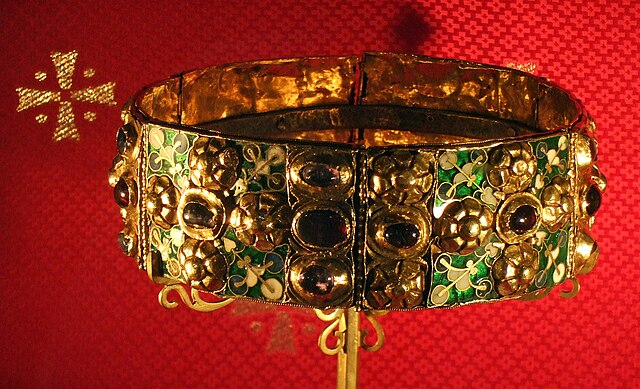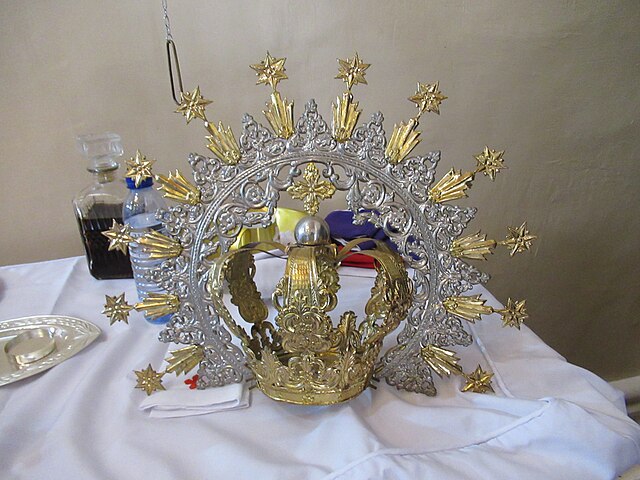The Iron Crown is a reliquary votive crown, traditionally considered one of the oldest royal insignia of Christendom. It was made in the Middle Ages, consisting of a circlet of gold and jewels fitted around a central silver band, which tradition held to be made of iron beaten out of a nail of the True Cross. In the later Middle Ages, the crown came to be seen as a heritage from the Kingdom of the Lombards and was used as regalia for the coronation of some Holy Roman Emperors as kings of Italy. It is kept in the Duomo of Monza.
The Iron Crown, preserved in the Cathedral of Monza, Italy
Monza Cathedral
A votive crown is a votive offering in the form of a crown, normally in precious metals and often adorned with jewels. Especially in the Early Middle Ages, they are of a special form, designed to be suspended by chains at an altar, shrine or image. Later examples are more often typical crowns in the style of the period, either designed to be placed on the head of a statue, or re-used in this way after donation.
Detail of a suspended votive crown from Visigothic Spain, before 672 AD. Part of the Treasure of Guarrazar offered by Reccesuinth. Out of view are chains for suspension above, and a Byzantine pendant cross below. Alternate view.
Byzantine votive crown, given by Leo VI (r. 886-912), now in the Treasury of San Marco, Venice
One of many crowned statues of the Virgin Mary carried in the processions of Holy Week in Seville.
Statue crown temporarily removed, Obando Church, Philippines.






